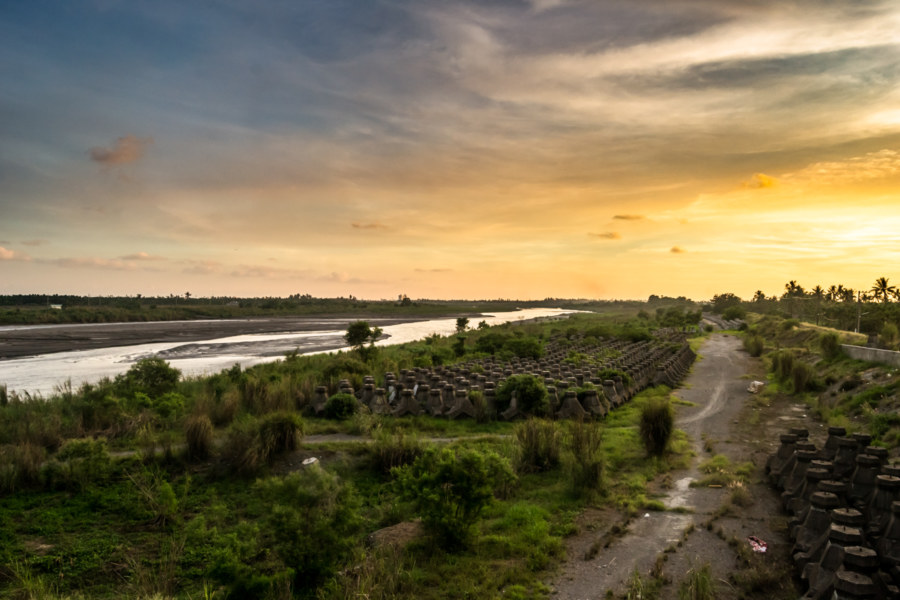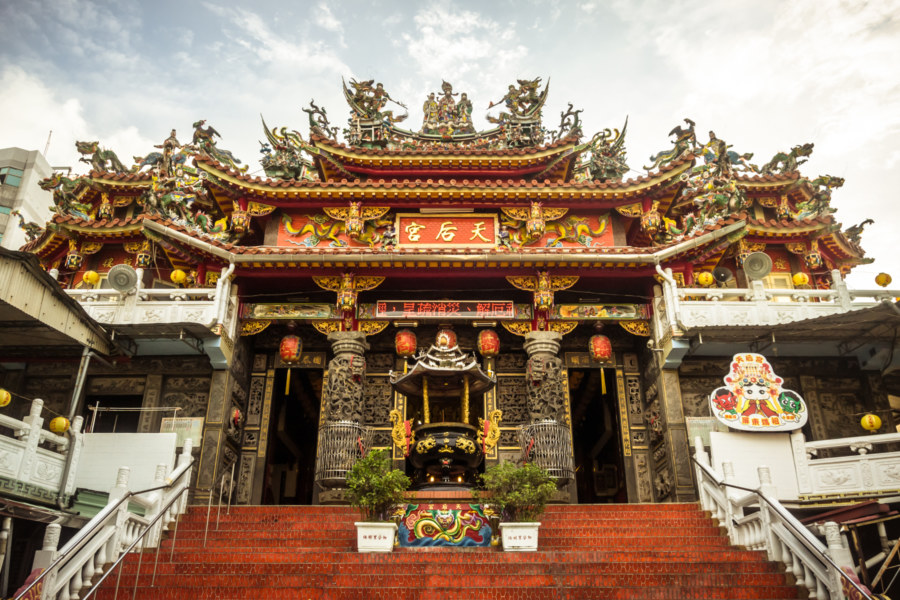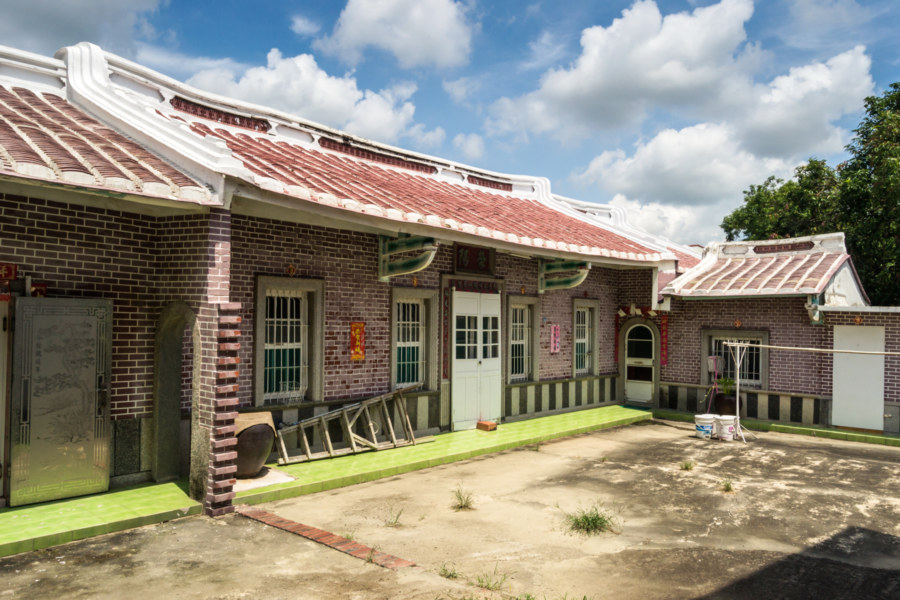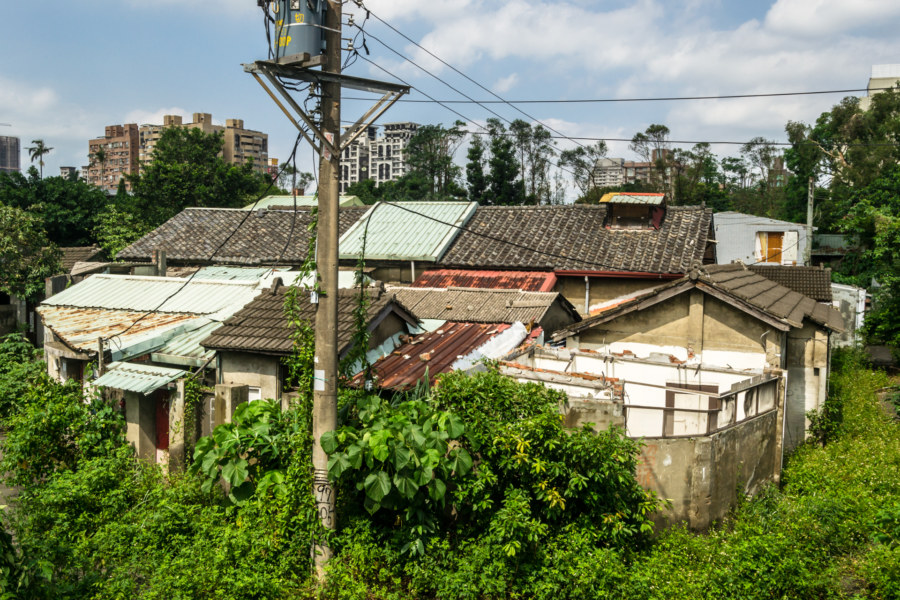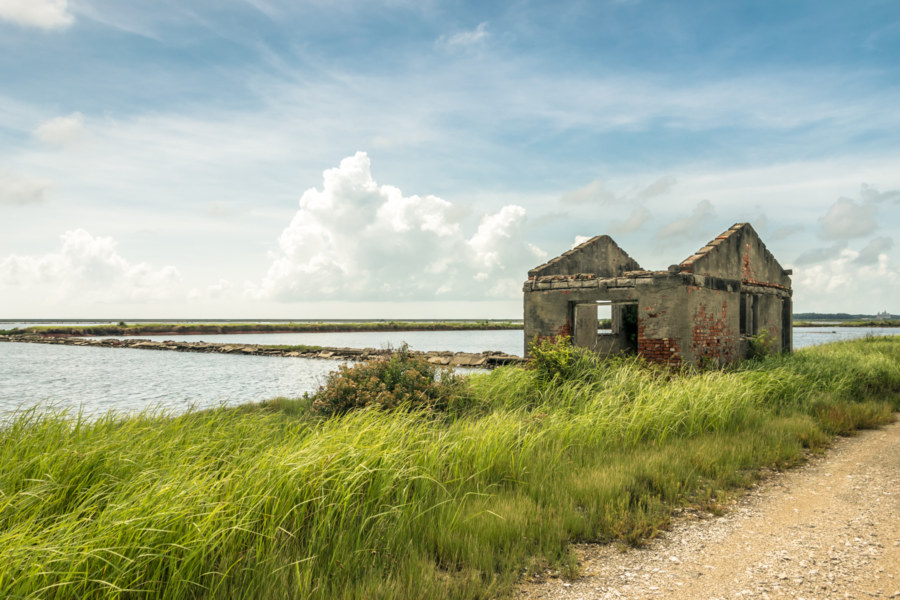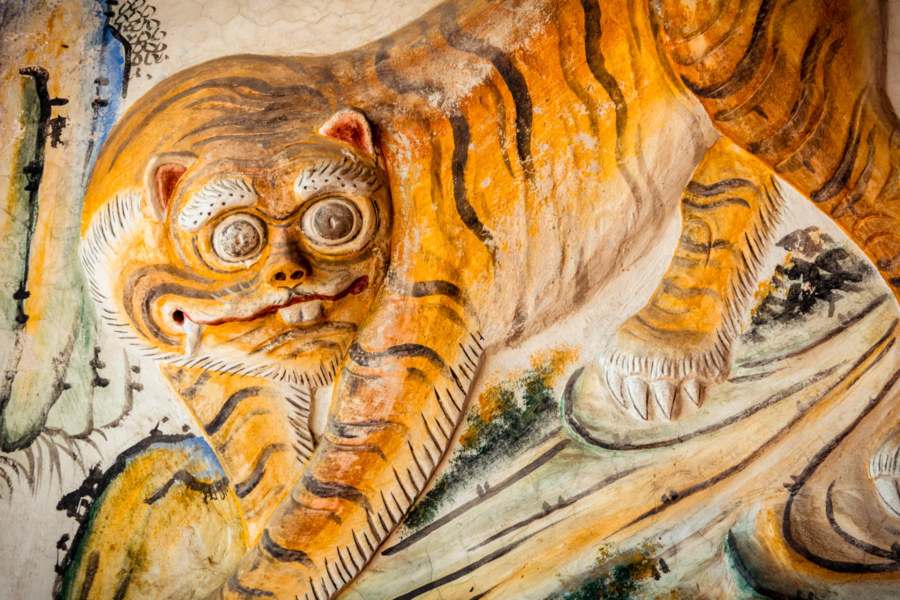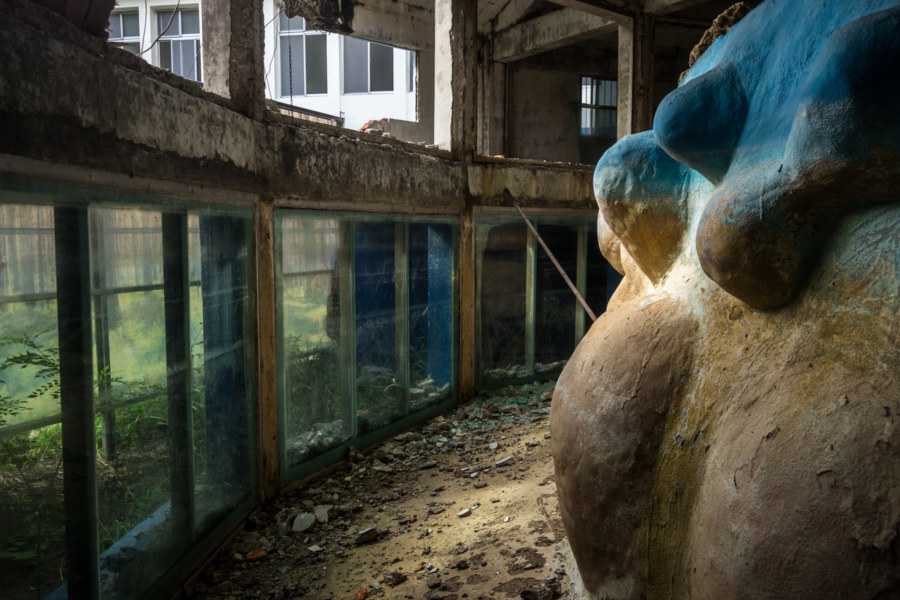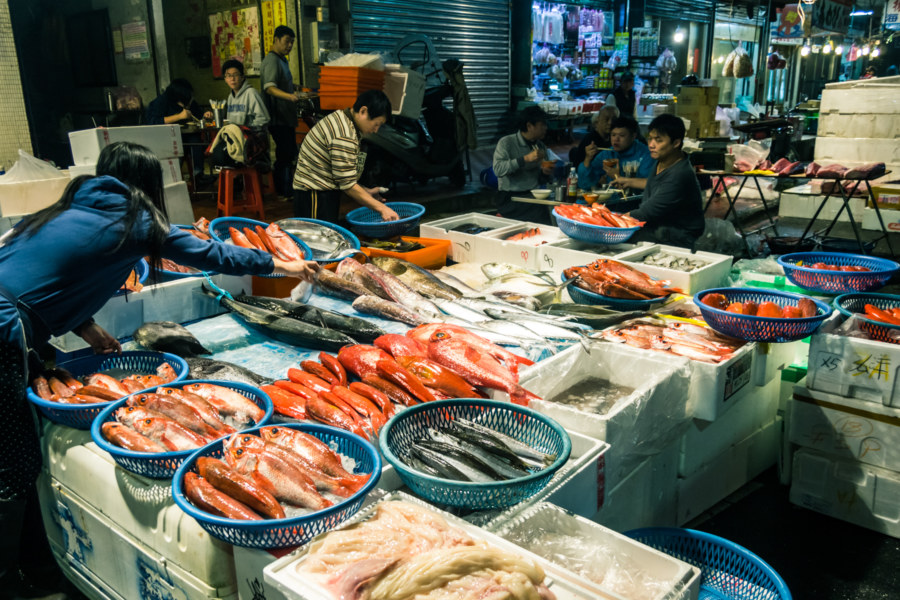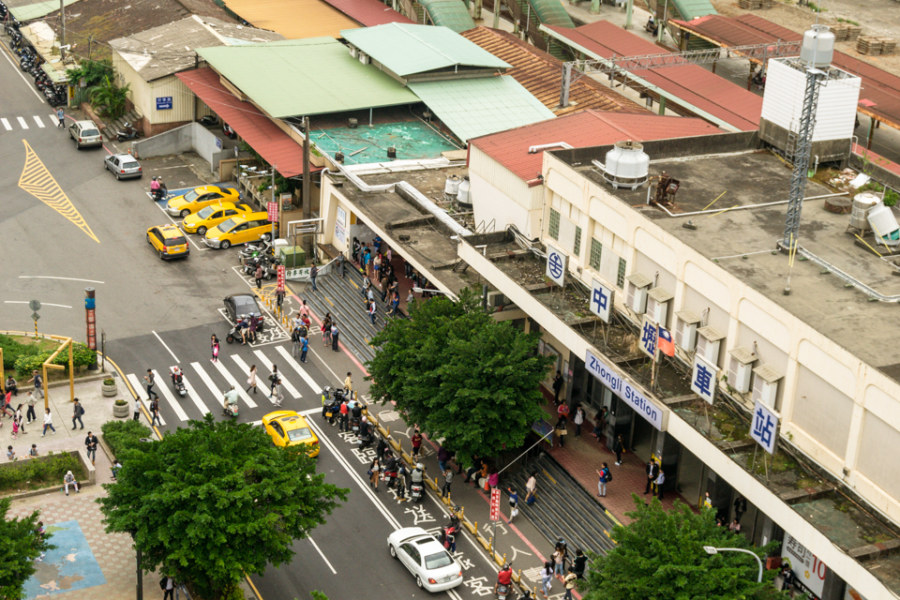Yonghe Theater 永和大戲院 is one of dozens of derelict movie theaters in Greater Taipei. Like hundreds of other theaters all around Taiwan this one went out of business in the early years of the new millennium due to changing consumer habits, a topic already discussed at length in previous explorations of places like Datong Theater 大同戲院 in Taitung City and Xinming Theater 新明戲院 in Zhongli. Whereas theaters in the rest of the country are often left to the elements, sky-high property values in the Taipei area strongly incentivize owners to do something with these decaying buildings. In this instance the front of the old theater was been converted for the use of into a 7-Eleven convenience store and an Italian restaurant by the name of Lan De Pasta House 嵐迪義大利麵. I wonder whether patrons of these establishments realize what looms overhead?
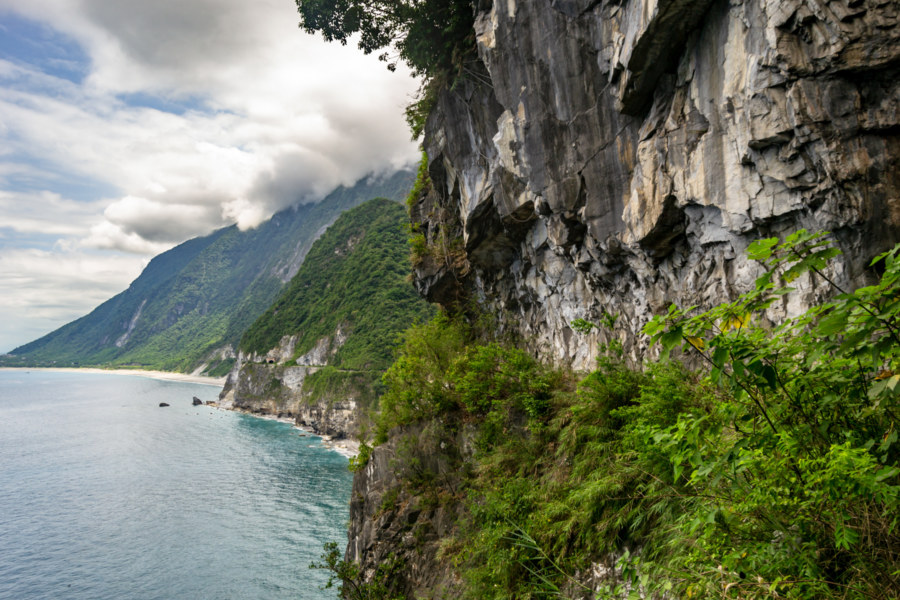
Southern Taiwan Ride 2015: Pingtung City to Fangliao
After spending a day riding around Pingtung City I was ready to hit the road again. With no specific destination in mind—only an intention to head in the direction of Hengchun, far to the south—I checked out of the vintage homestay I lodged at the previous night, stopped at Eske Place Coffee House for a delicious and healthy vegetarian breakfast, changed into cycling wear, and exited the city to the east. I knew almost nothing about where I was headed or what I might see on the third day of my southern Taiwan ride in 2015. I only had one stop planned in advance: a hospital in Chaozhou rumoured to be abandoned. I didn’t know it at the time but I would spend almost the entire day riding through the historic Hakka belt of Pingtung.
Postcards From Pingtung City 屏東市明信片
One of the pleasures of bicycle touring in Taiwan is the freedom to change plans on impulse. On my second day of a trip down south in June 2015, having previously cycled across Kaohsiung from Tainan, I opted to hang out and see more of Pingtung City. A dire weather forecast calling for bouts of torrential rain had already introduced some uncertainty, but I was also curious about this city of 200,000, about which almost nothing is written in English. Finding an interesting place to stay sealed the deal—and so I checked out of a grimy hotel near the train station after breakfast, moved my stuff to the new place, and spent the day exploring the administrative center of Pingtung, the southernmost division of Taiwan.
Southern Taiwan Ride 2015: Tainan to Pingtung City
Bicycle touring is one of the best ways to experience Taiwan. I don’t have an opportunity to go touring as much as I’d like but managed to find some time last year, in June of 2015, to embark upon a multi-day bicycle trip around southern Taiwan. My intention was to cover some of the same territory that I had rushed through on my first bicycle trip down south in 2013. I ended up racing a typhoon from Kenting to Taitung City that year—so the chance to explore the backroads of Pingtung at a more relaxed pace really appealed to me. I started my journey in Tainan, my favourite city in Taiwan, and cycled through Kaohsiung to Pingtung City, putting about 70 kilometers behind me. Gathered here are some photos from the first day of this trip, continued here.
Jiahe New Village 嘉禾新村
Jiahe New Village (嘉禾新村) is one of more than 800 military dependents’ villages (Chinese: juàncūn 眷村) built in Taiwan in the late 1940s and 1950s to provide provisional housing for KMT soldiers and their families fleeing from the Chinese Civil War. Approximately two million people crossed the Taiwan Strait from China from 1945 to 1949, bolstering an existing population of approximately seven million. More than 600,000 of these Chinese immigrants ended up in military villages like this one in Zhongzheng, Taipei, which was forcibly abandoned only a couple of years ago as part of a wave of urban renewal projects sweeping the nation.
Qingkunshen Fan-Shaped Saltern 青鯤鯓扇形鹽田
The southwestern coastal region of Taiwan is salt country. From Budai in Chiayi down through Beimen, Jiangjun, and Qigu in Tainan, an incredible expanse of manmade salt evaporation ponds sprawl across a completely flat and almost featureless landscape, much of it reclaimed from the briny lagoons that line the coast. Salt has been produced here for more than three centuries by channeling seawater into artificial enclosures and letting the strong tropical sun do the rest. Taiwan’s accession to the WTO in 2002 doomed the industry and all remaining salterns (or salt fields, if you like) were decommissioned that same year. This led to the abandonment of the unique Qīngkūnshēn Fan-Shaped Saltern (青鯤鯓扇形鹽田), now a surreal reminder of the history of salt production in southern Taiwan.
Daodong Academy 道東書院
Dàodōng Academy (道東書院) is one of many Qing dynasty era academies scattered across central and southern Taiwan. Located in Hemei in Changhua, it was built in 1857, the 7th year of the Xianfeng Emperor (清咸豐七年), and operated as a private school devoted to classic Chinese literature, philosophy, and ethics, among other subjects. Commonly known to locals as Wénmiào (文廟, “Temple of Literature”), the academy also venerates Song dynasty scholar Zhū Xī (朱熹) and Kuí Xīng (奎星), the god of examinations.
Golden Birds Paradise 金鳥海族樂園
Not long after returning to Taiwan in 2015 I received an invitation from a friend to go road tripping down to Hsinchu to check out an abandoned theme park. Along the way we stopped off to check out a derelict cablecar station and the restored Héxìng Station 合興車站 before arriving at the gateway to Golden Birds Paradise 金鳥海族樂園. Located in the rolling hills of Hsinchu not far from the border Taoyuan, it was among the most extensive and well-known theme parks of northern Taiwan at its peak in the 1990s. Business faltered with the rise of new forms of entertainment in the 2000s and from what I can tell it was completely abandoned nearly a decade ago. Most of the amusement park rides were torn out and probably sold for scrap metal long ago—but many of the original buildings remain, neglected and overgrown.
Kanzaiding Fish Market 崁仔頂漁市場
Kànzǎidǐng Fish Market 崁仔頂漁市場 is supposedly the longest-running operation of its kind in northern Taiwan. Back in the Japanese colonial era the market was located along the banks of the Xùchuān River 旭川河 in Keelung, formerly a navigable canal running through the downtown core and emptying into the harbour. The name of the market is derived from a Taiwanese Hokkien term for the stone stairs that once lined the side of the canal; Kanzaiding literally means “top of the stairs”. The Japanese built a pier in the late 1920s, making it easy for fishermen to offload their catch next to the market, and convenient access to the railway network encouraged its growth.
Postcards From Zhongli 中壢明信片
I resided in Zhongli, Taoyuan, for two months at the very end of 2015 for reasons outlined in my first dispatch. In short: I wanted to try out living in another city in Taiwan and had a few good friends in the area, one of whom is fellow Canadian blogger Josh Ellis. In my time in Zhongli I captured numerous scenes from everyday life in this burgeoning conurbation of half a million. This post is meant to convey a sense of what it was like to live there for a while—just as I previously did for my time in Wenshan District, Taipei. It is not meant to be a comprehensive guide or a review; think of this as a loose collection of snapshots and impressions of a mid-sized Taiwanese city not commonly documented in English.

